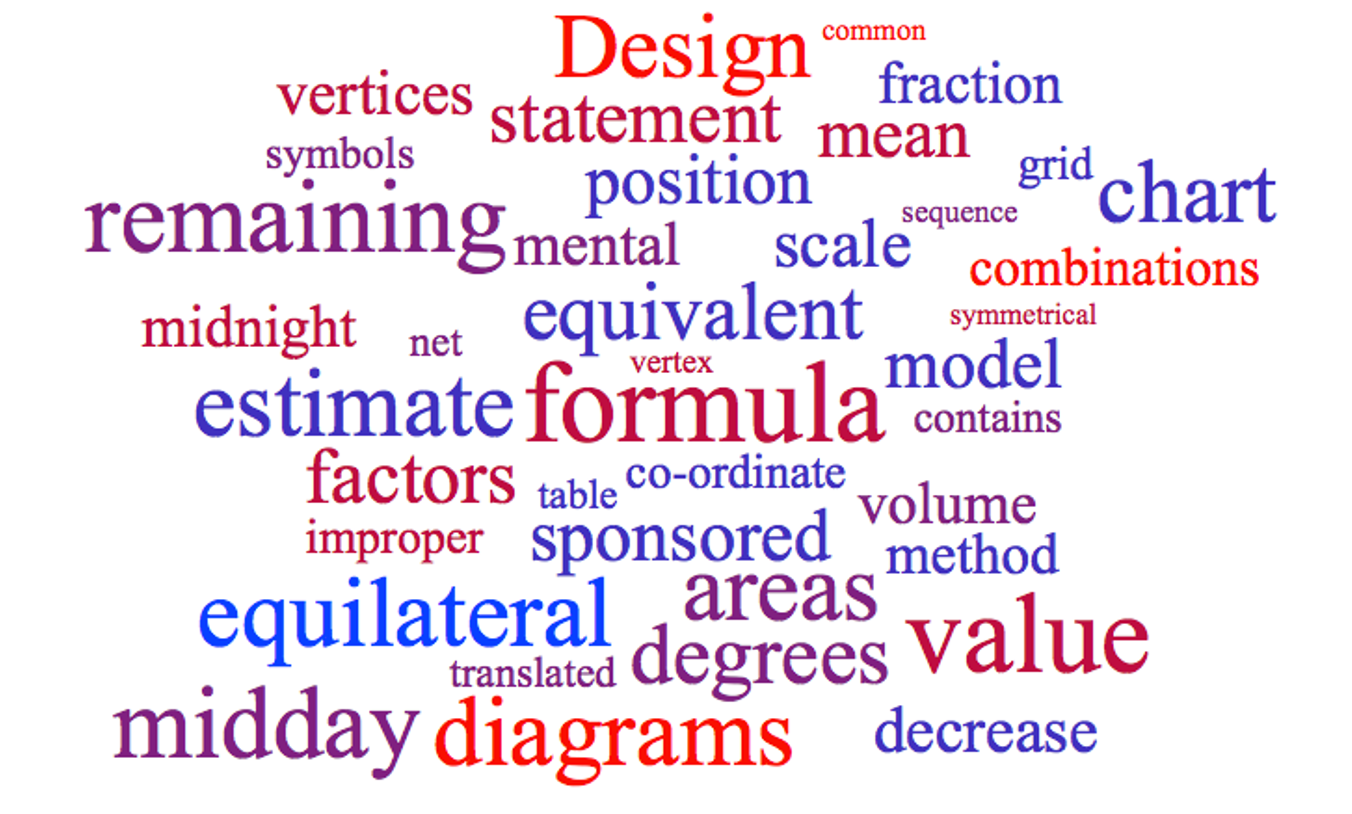Every teacher recognises that every subject is mediated by reading skill, but it matters in some more than others, right? Does it really matter that much in maths?
When I speak to teachers, or those school leaders responsible for aspects of literacy whole school, the refrain they often relate is that reading simply doesn’t matter so much in maths. Perhaps maths teachers – beleaguered by past experiences of being led down the path of generic reading and writing approaches – are simply defending their hard-won teaching ground?
Reading does matter to maths, of course, but how exactly?
Reading skill and mathematical vocabulary
Everyone recognises the unique language of mathematics that is separate to the everyday talk of pupils.
Maths is clothed by polysemous vocabulary (words that have multiple meanings) that can foster ambiguity and unhelpful misconceptions. Just a few include:
Prime… factor… base … angle … cardinal … common … proper … volume … difference etc.
Not only that, some maths words are homophones (words having the same pronunciation but different meanings, origins, or spellings) with more common words e.g. pi and pie, sine and sign.
Even simple mathematical operations, like subtraction, is described in lots of ways in typical talk, such as ‘subtract’, ‘minus’ or ‘take away’. Then you add in words like ‘decrease’, ‘reduce’ and ‘take off’. Teachers are constantly translating the language of maths – not unlike a German or French teacher.
Researcher, Andrew Rothery, helpfully defined three categories of mathematical vocabulary:
1. Words which are specific to mathematics and not usually encountered in everyday language (e.g. hypotenuse, coefficient).
2. Words which occur in mathematics and ordinary English, but involve different meanings in these two contexts (e.g. difference, volume).
3. Words which have the same or roughly the same meaning in both contexts (e.g. fewer, between).
A further translation challenge is how mathematics is represented in multiple ways. And so, when you read or write…
a² + (a +2) ² = 340
The equivalent sentence in words to be read is…
‘The sum of the squares of two consecutive positive even integers is 340.’
Of course, many maths problems combine these representations, so that reading is a tricky, multi-faceted act for pupils. Careful, slow reading, and re-reading, is often necessary to actually unpack the mathematical operations required by pupils.
In US research, perhaps unsurprisingly, it found that ‘‘nationally, children perform 10% to 30% worse on arithmetic word problems than on comparable problems presented in numeric format.”
Teachers of maths will testify to the challenge of multi-step word problems. We can be confident then that reading in maths *really* does matter. Precision with mathematical talk will matter. Explicitly teaching on ‘how to read like a mathematician’ could prove beneficial for those pupils struggling with word problems.
What other solutions can help? Explicit vocabulary instruction is likely one useful strategy. Keeping a glossary of mathematical terms, along with accompanying diagrams and representations could help (this may be particularly beneficial for EAL pupils too).
Being explicit and strategic about how you read – and re-read – maths problems is likely to help many pupils who are grappling simultaneously with learning the mathematics and the language of mathematics.
The deft interplay, flipping between everyday language to mathematical terms, and back again, by expert maths teachers, will of course prove vital when teaching maths and the reading of mathematical problems or textbooks. ‘Maths talk’ will prove crucial for young children, whilst continuing to be vital at every key stage.
Reading matters in maths, more than most teachers, and pupils, may assume.
Related resources:
- ACER, from Australia, have produced an excellent digest on language in mathematics – HERE.
- Maths mastery have produced a handy vocabulary list – HERE.
- A new resource from the EEF on addressing misconceptions – ‘REACT to Misconceptions’ – is a useful approach to consider in relation to language being a barrier to mathematical understanding – HERE.






Comments